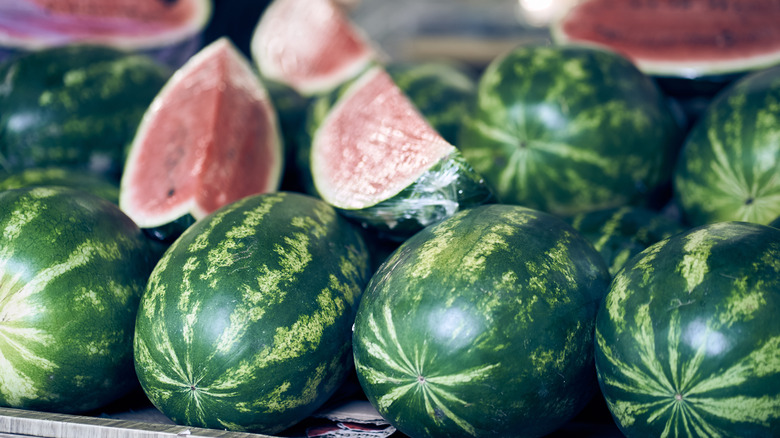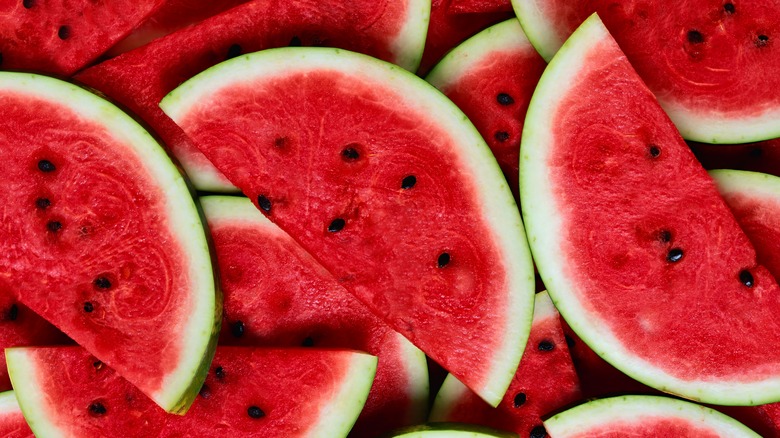Are Supermarket And Farm-Stand Watermelons The Same?
Summer is watermelon season, and not just because this fruit's harvest season is May to September (though available year-round), but because there is no treat more refreshing and no classic more essential on a picnic table. Many of us probably do a lot more watermelon shopping during the summer than any other time of year, but that shopping could just as likely happen at the supermarket as it could at the local farm stand. The question is, does location matter? When it comes to the watermelons at farm stands versus watermelons at supermarkets, is there a difference?
For those of us who don't live near farm stands, it can be a bitter pill to swallow that yes, there is a bit of a difference. They're not entirely different kinds of watermelons, but they're at various levels of ripeness, majorly impacting the taste and texture. Ripe varieties tend to be sweeter and juicier with a crunch, whereas, lesser-ripened kinds have a limited sweetness and require softening over time.
Watermelon growers are pros at telling if the fruit is ripe, but they don't just pick the ripe watermelons when harvesting each time. They'll pick ripe and less-than-ripe. They send the former to farm stands because those are usually shorter distances for the melons to travel — a must for ripe watermelons, while the latter makes the longer journey to produce aisles at grocery stores. So, you're more likely to get an underripe watermelon at the supermarket, which won't be as sweet or juicy.
How to find ripe watermelons wherever you shop
Durability determines which watermelons are destined for supermarkets. Farmers typically send in the sturdy, less ripe watermelons so they don't spoil before hitting stores. Meanwhile, all kinds of watermelons head for farm stands because they can be transported and purchased within a peak window of ripeness and freshness. At farm stands, you won't just find ripe melons, you'll find assorted variations with slightly differing flavors and rind patterns, sweet, juicy, and crisp yet slushy. You're also more likely to find someone running the farmstand who can talk to you about these varieties.
But that doesn't mean those with only access to supermarkets are stuck with subpar melons. When it comes to the many different ways to enjoy watermelon, you always want a ripe, sweet fruit to work with to elevate everything from salads to margaritas. So, it helps to know tips for picking the right watermelon because you can, in fact, find a ripe one in the grocery store, you just have to know how. Look for a "field spot" where the melon was resting on the ground; it should be yellow — a white or pale green "field spot" indicates the fruit was harvested prematurely. Feel the watermelon's weight: It'll be heavy if it's ripe and dense with flavorful water. You can even use a two-finger trick, measuring the rind's stripes to find a perfect width signaling ripeness.

